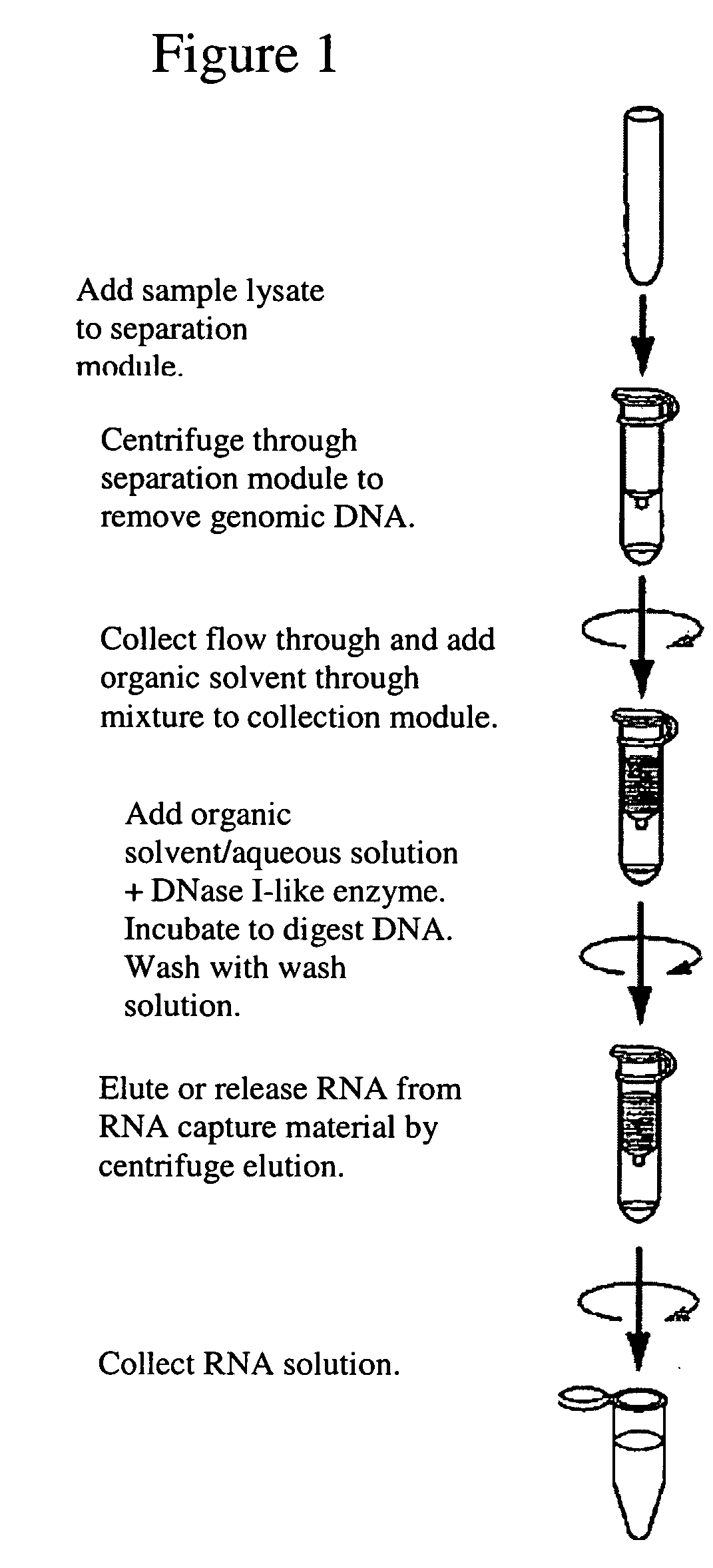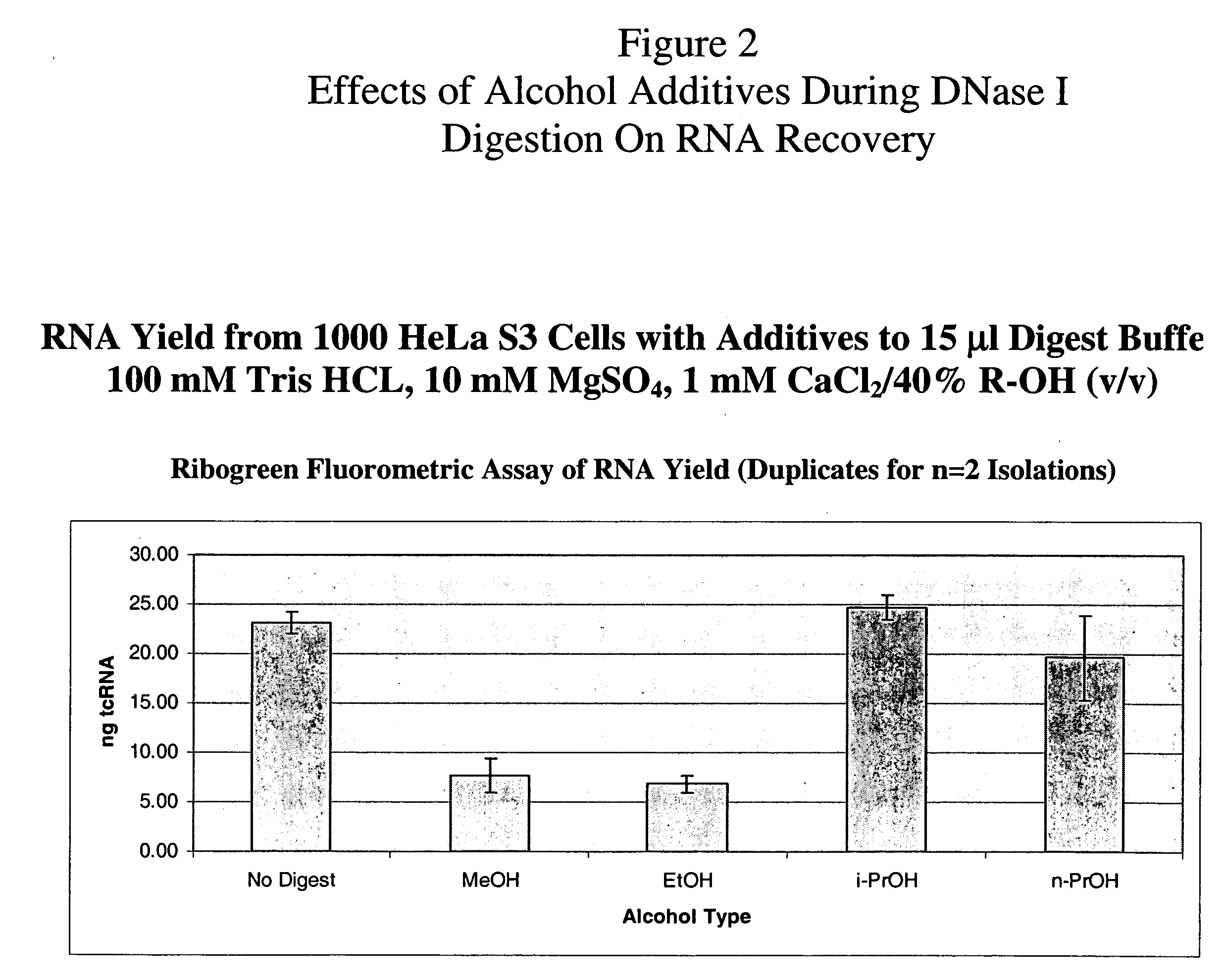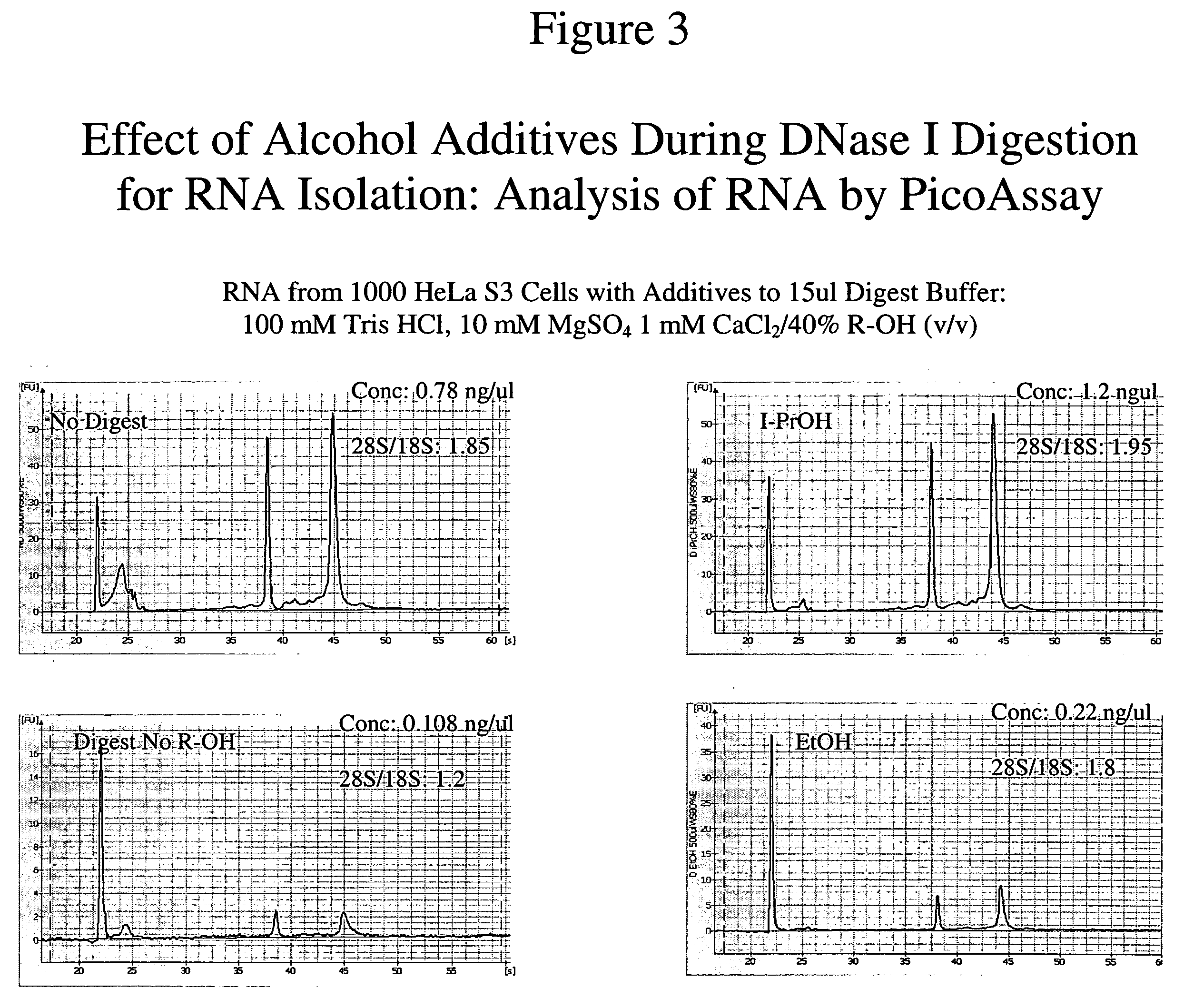Methods of using a DNase I-like enzyme
a technology of dnase and enzyme, applied in the field of methods of using dnase ilike enzyme, can solve the problems of increased potential for carrying-over of enzyme into downstream processes, increased potential for adding contaminating rnase activity, waste of costly enzyme, etc., and achieves the effect of improving the recovery of rna
- Summary
- Abstract
- Description
- Claims
- Application Information
AI Technical Summary
Benefits of technology
Problems solved by technology
Method used
Image
Examples
example 1
Isolation of RNA
[0097] During the isolation of RNA from small samples of biological origin, manipulations involving the sample should be kept to a minimum, and since the quantities of RNA may be in the nanogram range, all manipulations should be conducted in such a way to reduce loss of the mass and physical integrity of RNA. An optional DNase I digestion step is often used to remove gDNA from RNA samples, thereby removing the DNA as a contaminant, improving the purity and experimental relevance of the isolated sample. DNAase I digestion should therefore be conducted considering the desire to minimally manipulate the RNA sample, and to reduce the opportunity to lose the RNA. In the description that follows, we demonstrate that the DNase I digestion of gDNA contaminants can be conducted in such a manner to prevent solubilization of RNA, and concomitant loss from an RNA-collection device, while selecting conditions which are shown to permit highly active DNase activity.
RNA Isolatio...
PUM
| Property | Measurement | Unit |
|---|---|---|
| Fraction | aaaaa | aaaaa |
| Fraction | aaaaa | aaaaa |
| Fraction | aaaaa | aaaaa |
Abstract
Description
Claims
Application Information
 Login to View More
Login to View More - R&D
- Intellectual Property
- Life Sciences
- Materials
- Tech Scout
- Unparalleled Data Quality
- Higher Quality Content
- 60% Fewer Hallucinations
Browse by: Latest US Patents, China's latest patents, Technical Efficacy Thesaurus, Application Domain, Technology Topic, Popular Technical Reports.
© 2025 PatSnap. All rights reserved.Legal|Privacy policy|Modern Slavery Act Transparency Statement|Sitemap|About US| Contact US: help@patsnap.com



